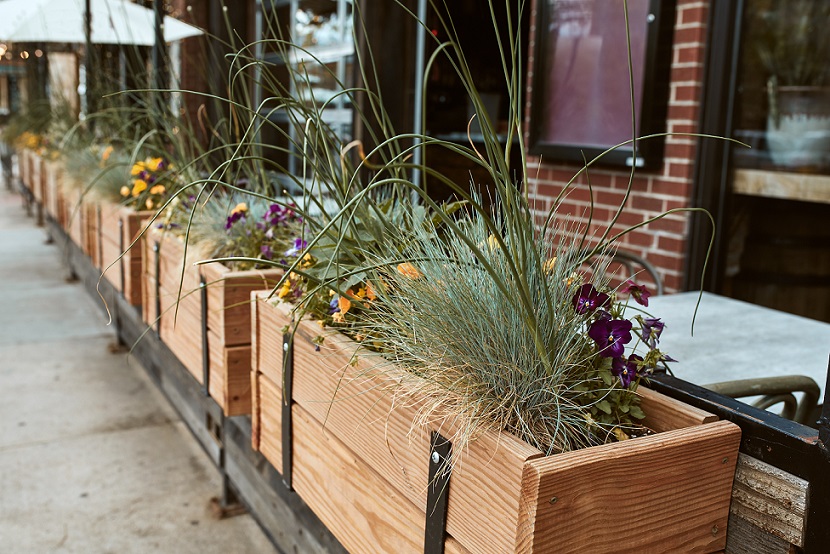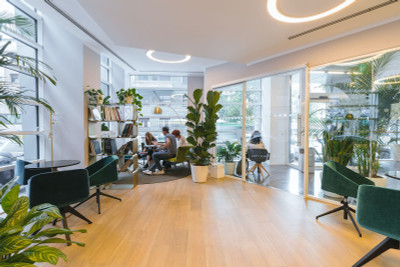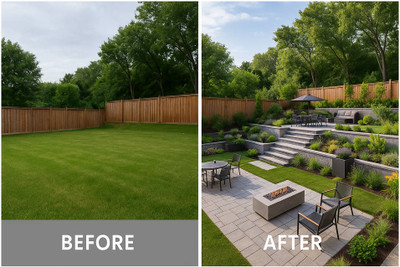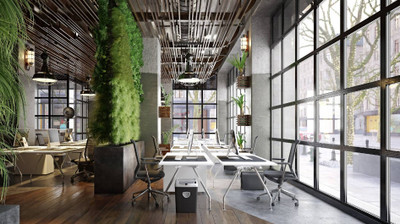How to Plant in a Wooden Planter
Posted by Jason Wyrwicz on Aug 8th 2024

There's a massive variety of wooden planters available on the market in all shapes and sizes, and you can even DIY them yourself using fruit crates, whiskey barrels, and other vintage finds. They certainly make attractive containers and can be used for flowers, shrubs, miniature trees, and even vegetables and herbs — creating a fabulous focal point for your business's patios, roof gardens, and outside spaces.
However, planting in wooden boxes takes a little preparation, as, without the proper treatment, these pots and planters are likely to rot and decay incredibly quickly out in the elements. To help keep them looking their best for longer, this guide details everything you need to know about gardening using wooden planters, including which type of wood is best and how to stop the damp from getting in.
Tips for Preparing Wood Pots for Plants
Before you start planting in wooden planters, follow these five simple steps to make them as durable as possible:
- Prepare the wood — to prevent your wooden planter from deteriorating in poor weather, you'll need to waterproof both its exterior and interior before adding your greenery. Do this by coating your container in a liquid wood sealer, avoiding chemical sealers if you're planning to grow anything edible, then reapply yearly to guarantee longevity.
- Add a lining — cover the entire inside of your wooden box with a sheet of heavy-duty plastic, burlap, or landscaping fabric, cut to size and nailed in place. Or shortcut this part of the process by filling your planter with vegetation in plastic pots, saving you time and making it easy to swap your plants out as the seasons change.
- Ensure there's sufficient drainage — drill holes into the base of your container to prevent the soil from becoming waterlogged and roots from rotting. Covering these with another layer of landscaping fabric will stop your potting mix from being washed away during watering.
What Type of Wood Is Best for Planter Boxes?
The two most popular types of wood for outdoor planters are cedar and redwood. Cedar is valued for its durability, natural resistance to fungi and rot, and ability to keep plants cool and stop soil from drying out on even the sunniest of days. On the other hand, as redwood is one of the fastest-growing species of wood, it's readily available and relatively cheap, plus its ruddy hue is excellent for adding tonal interest to your scheme.
Downsides of Planting in Wooden Planters
Even after you've spent time and effort properly treating the wood, planter boxes made from this type of material typically don't last very long as constant exposure to damp soil and heavy rain makes them prone to splitting and rot. And they're also astonishingly high-maintenance, as you need to bring them inside to dry out regularly and coat them in a preservative treatment at least once a year to maintain their appearance.
Instead, consider using commercial-grade fiberglass planters to enhance your company's decor. Made by weaving together a combination of plastic resin and glass fibers, these containers stand the test of time. You can place them outside during rain, wind, and frost or, as they're shatter-proof, sit them in high-traffic areas like receptions or offices without worry. Other benefits include their lightweight, making them easy to maneuver, and their versatility, as they can be molded into almost any shape and size and given texture to perfectly mimic natural materials, such as stone and concrete.
At Pots, Planters & More, we specialize in high-quality fiberglass planters, specially designed for commercial settings and available in a wide range of colors, designs, and sizes. If you would like to discuss the pros and cons of different container materials or learn more about our products, please call (855) 627-1066 or email sales@potsplantersandmore.com.



